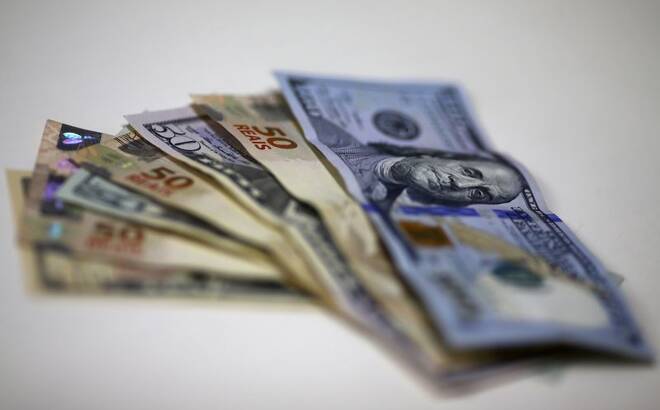Advertisement
Advertisement
Brazil real to remain under pressure as fiscal changes weigh – Reuters poll
By:
By Gabriel Burin BUENOS AIRES (Reuters) - Brazil's real will stay under pressure while the new government mulls fiscal reforms to allow for higher welfare spending, but losses should subside as money dealers head out for their summer break in the Latin American nation, a Reuters poll showed.
By Gabriel Burin
BUENOS AIRES (Reuters) – Brazil’s real will stay under pressure while the new government mulls fiscal reforms to allow for higher welfare spending, but losses should subside as money dealers head out for their summer break in the Latin American nation, a Reuters poll showed.
The currency has depreciated 2.6% to 5.43 per U.S. dollar since President Luiz Inacio Lula da Silva took office at the start of the year, affirming his vow to prioritize social issues and extending fuel tax exemptions.
Trading tends to slow down, along with the anxiety of market participants, during summer in the Southern Hemisphere, which began on Dec. 21.
Formal discussions over a fresh budget scheme, aimed at offsetting the impact on the public debt of Lula’s 168 billion reais extra spending package, are expected to not start until April.
The real is set to gain 2.5% in one month to 5.30 per U.S. dollar, according to the median estimate of 15 foreign exchange strategists polled Jan. 3-5 – the weakest expected level in the 30-day period since a consensus of 5.30 in October.
“Depending on the design of the new fiscal framework, markets may get frustrated and foster an increase in the risk premium for prices of Brazilian financial assets,” Santander economists wrote.
In reply to a separate question on the skew for the real in the coming year, a majority of seven of 12 respondents viewed risks tilted to the downside, three saw a neutral trend, and the other two inclined toward a stronger local currency.
In one year, the real is likely to recover 4.4% to 5.20 per dollar, according to a wider sample of 23 economists. And in Mexico, the consensus 12-month forecast for the peso, at 20.00 per dollar, implied a potential drop of 3.1%.
Still, 2023 would be the seventh year in a row Mexico’s currency trades around 20.00 per dollar, consolidating its position as the most stable currency in a region where volatility is becoming more the norm rather than the exception.
The balance of risks perceived by poll participants for the peso was more favorable, with five of ten seeing softer levels, but three viewing chances of stronger values in the unit, and two giving a neutral answer.
Mindful of the dangers posed by currency weakness in developing countries, the Bank of Mexico raised its key interest rate to a record 10.50% in its last meeting of 2022 and suggested it could hike at least once more.
(For other stories from the January Reuters foreign exchange poll:)
(Reporting and polling by Gabriel Burin in Buenos Aires; additional polling by Mumal Rathore and Indradip Ghosh in Bengaluru; Editing by Bernadette Baum)
About the Author
Reuterscontributor
Reuters, the news and media division of Thomson Reuters, is the world’s largest international multimedia news provider reaching more than one billion people every day. Reuters provides trusted business, financial, national, and international news to professionals via Thomson Reuters desktops, the world's media organizations, and directly to consumers at Reuters.com and via Reuters TV. Learn more about Thomson Reuters products:
Advertisement
